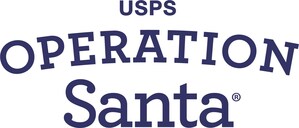FORT PIERCE, Fla., Feb. 22, 2018 /PRNewswire/ -- The U.S. Postal Service searched the darkness of the deep ocean realm in its quest to deliver the luminous beauty of bioluminescent life on highly-reflective Forever stamps.
Available nationwide today, the Bioluminescent Life Forever stamps celebrate life-forms that create their own light and perform a variety of functions, including support for medical research. The stamps include glowing marine species, a firefly and a cluster of mushrooms captured on the surface.
Shimmering Stamps
Although these stamps do not glow in the dark, they do incorporate a special effect. The stamp pane was produced using a proprietary rainbow holographic material that is highly reflective in white light. The stamps were produced using special techniques to enhance the reflective qualities of the material while maintaining the depth of color and detail of the individual images. The rainbow pattern imparts a sense of movement and light to the stamp pane.
The stamps were dedicated today at the Sunrise Theater in historic downtown Fort Pierce, FL.
"These stamps were created so that they reflect back light to mimic the effect of bioluminescence," said U.S. Postal Service Chief Human Resources Officer and Executive Vice President Jeffrey Williamson. "Much like the magical creatures we're celebrating today, these stamps are truly dazzling. And starting today, these vibrant images will travel quickly, easily and affordably on letters and packages to millions of households and businesses throughout America — inspiring an even greater appreciation for this vital part of our natural landscape."
Joining Williamson in the dedication was Ocean Research and Conservation Association (ORCA) CEO/Senior Scientist Edith Widder, whose photographs appear on seven of the stamps.
"These are such amazing creatures," said Widder. "It's thrilling to be able to share these images and help reveal what I think is one of the most entrancing, but least known wonders of the natural world — the ability to make light."
Bioluminescence performs a variety of functions
Fairly rare among species on land, bioluminescence reigns supreme in the darkness of the deep ocean. Fishes, squids, jellyfish, worms and many other ocean organisms make varied use of their ability to glow. Their light can lure food, attract a mate or fend off a predator. For many species, bioluminescence is security lighting. For example, the midwater jellyfish — featured on one of the stamps — sets off flashing swirling rings of light when threatened. The display alerts other predators more likely to eat the attacker than the jellyfish itself.
Some species are born with bioluminescence, while others, like certain fishes and squids, have receptacles for displaying bioluminescent bacteria that they capture.
Since the late 19th century, many breakthrough discoveries regarding bioluminescence have come through the study of fireflies and flickering beetles. Because these beetles exist on every continent except Antarctica, they provide scientists with the most convenient means by which to investigate the phenomenon.
Fighting cancer and other diseases
Medical science has benefited tremendously from the study of luminous life-forms. Using genes that enable bioluminescence, scientists can make a cancer cell glow, enabling observation of how the disease behaves and spreads. Similar research is also vital in the fights against Alzheimer's, Parkinson's, anemia, malaria, dengue fever, HIV and many other illnesses.
Through improved deep-sea exploration and advances in photography, scientists have identified thousands of bioluminescent species. Yet many mysteries of bioluminescence remain unsolved, and many benefits of research await discovery.
From left, the first row of stamps features a deep-ocean octopus (Stauroteuthis syrtensis) and a midwater jellyfish (Atolla vanhoeffeni), both photographed by Edith Widder of Ft. Pierce, FL. The octopus was photographed under external lighting. On each row of stamps, the third and fourth stamps repeat the first two designs.
The second row of stamps begins with a deep-sea comb jelly (Bathocyroe fosteri), also by Widder and lit externally, then a cluster of mushrooms (Mycena lucentipes) by Taylor F. Lockwood of Mount Dora, FL.
The third row features a firefly (Lampyridae) by Gail Shumway of Sarasota, FL, followed by a bamboo coral (Keratoisis flexibilis) by Widder.
Widder also photographed both fourth-row images: a marine worm (Flota) and a crown jellyfish (Atolla wyvillei). Both are shown under external lighting.
The fifth and final row of stamps offers another type of marine worm (Tomopteris), by Steve Haddock of Moss Landing, CA, and a sea pen (Umbellula) by Widder. Both marine species are shown under external lighting.
Atop the pane's selvage, transected by the issuance title, "BIOLUMINESCENT LIFE," is an image of a transparent deep-sea comb jelly (Mnemiopsis leidyi) photographed under external lighting by Gregory G. Dimijian of Farmers Branch, TX. The firefly squid (Watasenia scintillans) shines a brilliant blue, green and white display of bioluminescence from the darkness of the selvage in a photograph by Danté Fenolio of San Antonio, TX.
Designer Derry Noyes of Washington, DC, designed the stamps and the stamp pane using existing photographs.
Stamp ideas welcome
The public is encouraged to submit stamp suggestions. Visit the Citizens' Stamp Advisory Committee website for details on the stamp selection process and instructions for submitting suggestions in writing. Due to the time required for research and approval, ideas for stamp subjects should be received at least three years prior to the proposed release. Each submission should include pertinent historical information and important dates associated with the subject.
Ordering first-day-of-issue postmarks
Customers have 60 days to obtain first-day-of-issue postmarks by mail. They may purchase new stamps at Post Office locations, at the Postal Store usps.com/shop or by calling 800-782-6724. Customers must affix the stamps to envelopes of their choice, address the envelopes to themselves or others and place them in larger envelopes addressed to:
FDOI – Bioluminescent Life Stamps
USPS Stamp Fulfillment Services
8300 NE Underground Drive, Suite 300
Kansas City, MO 64144-9900
After applying the first-day-of-issue postmark, the Postal Service will return the envelopes through the mail. There is no charge for postmarks up to a quantity of 50. For more than 50, customers are charged 5 cents each. All orders must be postmarked by June 22, 2018.
Ordering first-day covers
The Postal Service also offers first-day covers for new stamps and stationery items postmarked with the official first-day-of-issue cancellation. Each item has an individual catalog number and is offered in the USA Philatelic publication and online at usps.com/shop. Customers may register to receive a free USA Philatelic publication online at usps.com/philatelic.
Philatelic products
The following Philatelic products are available at usps.com/shop.
- 475710, Digital Color Postmark Keepsake (random cover), $11.95.
- 475716, First-Day Cover (set of 10), $9.40.
- 475721, Digital Color Postmark (set of 10), $16.50.
- 475730, Ceremony Program, $6.95.
- 475724, Shadow Box $39.95
- 475706, Press Sheet $90.00
- 475750 Framed Art $26.95
You may view many of this year's other stamps on Facebook at facebook.com/USPSStamps or via Twitter @USPSstamps. All postage stamps are available for purchase at Post Offices, online at usps.com, and by toll-free phone order at 1-800 STAMP-24.
The Postal Service receives no tax dollars for operating expenses and relies on the sale of postage, products and services to fund its operations.
Please Note: For broadcast quality video and audio, photo stills and other media resources, visit the USPS Newsroom at about.usps.com/news/welcome.htm.
For reporters interested in speaking with a regional Postal Service public relations professional, please go to about.usps.com/news/media-contacts/usps-local-media-contacts.pdf. Follow us on Twitter (twitter.com/usps), Instagram (instagram.com/uspostalservice), Pinterest (pinterest.com/uspsstamps), LinkedIn (linkedin.com/company/usps), subscribe to our channel on YouTube (youtube.com/usps), like us on Facebook (facebook.com/usps) and view our Postal Posts blog (uspsblog.com).
For more information about the Postal Service, visit usps.com and usps.com/postalfacts.
Florida: Debbie Fetterly
954.527.2941
C: 954.298.1687
[email protected]
National: Mark Saunders
202.320.0782
[email protected]
usps.com/news
SOURCE U.S. Postal Service
Related Links
WANT YOUR COMPANY'S NEWS FEATURED ON PRNEWSWIRE.COM?
Newsrooms &
Influencers
Digital Media
Outlets
Journalists
Opted In






Share this article